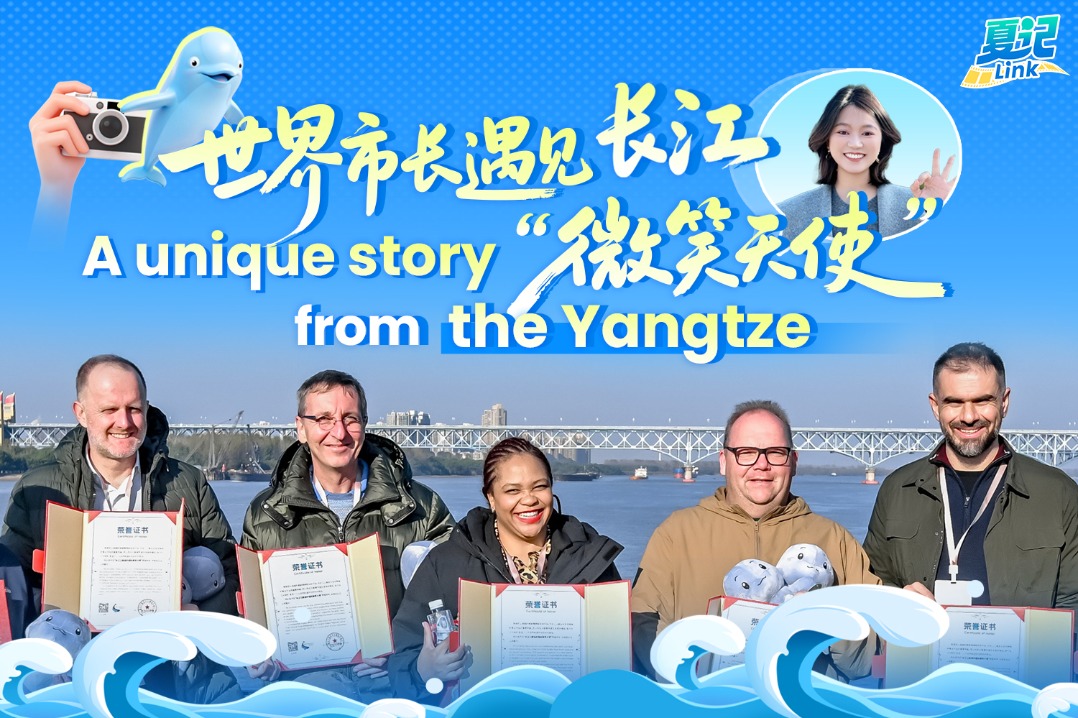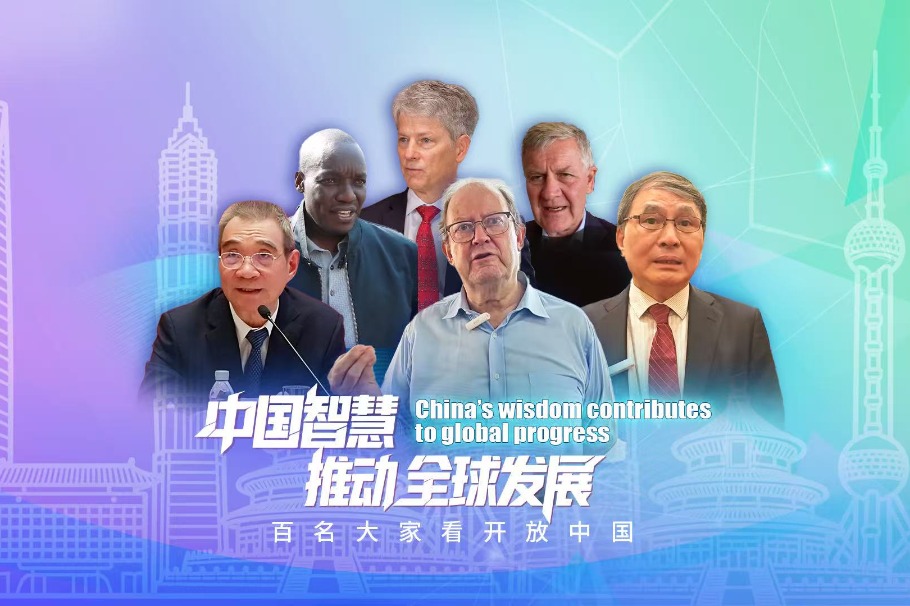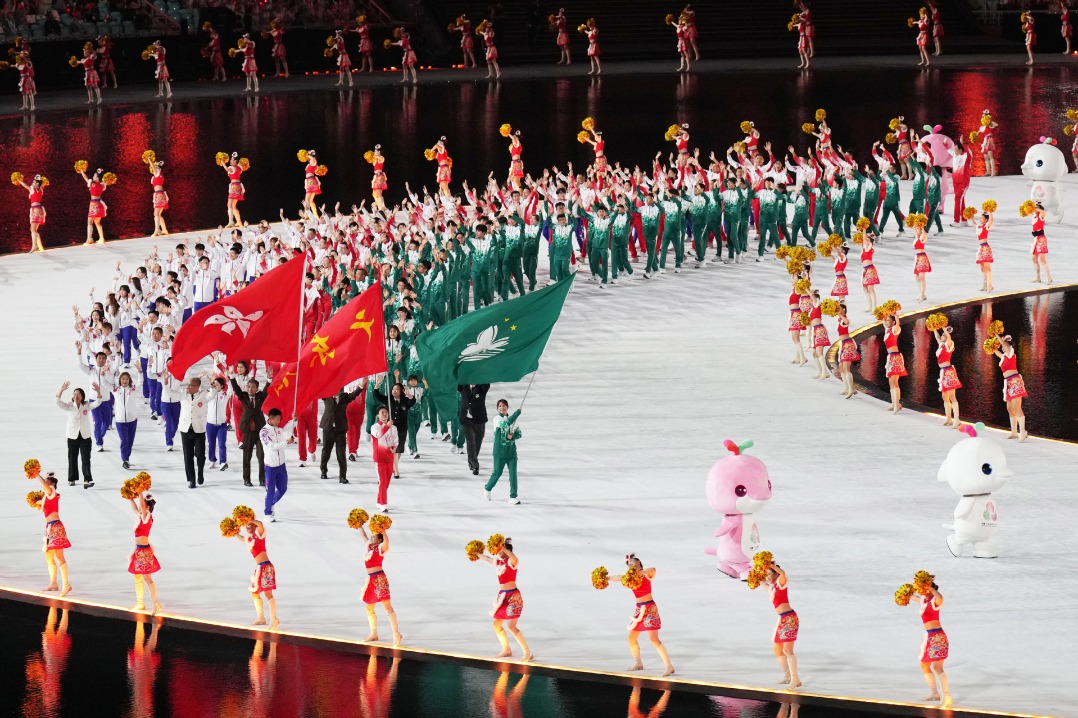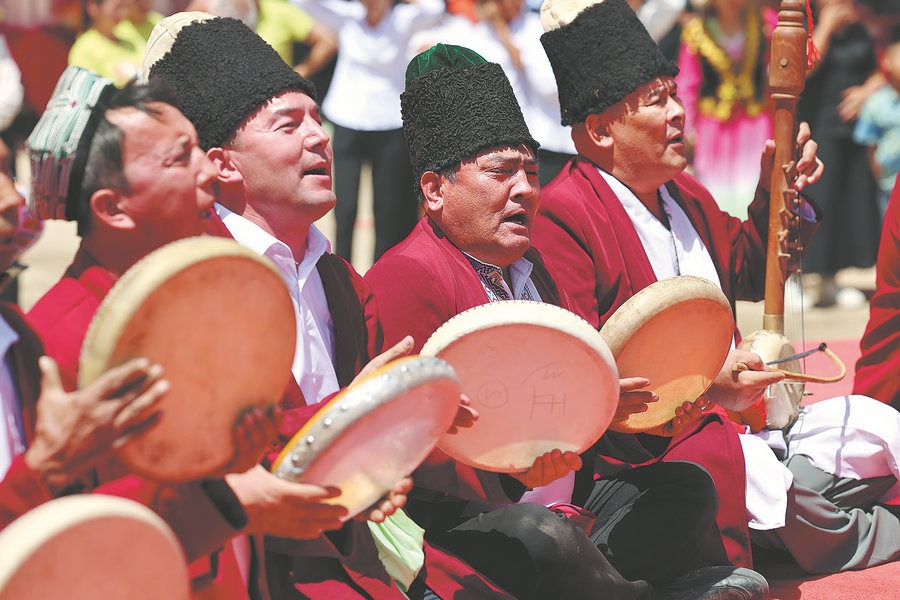'Beyond the Clouds' - Lijiang in 1995
By Bruce Connolly | chinadaily.com.cn | Updated: 2017-09-11 08:02
 |
| Towards Lijiang from slopes of the Snow Mountain 1995. [Photo by Bruce Connolly] |
In the early 1990's a documentary series,'Beyond the Clouds', introduced British television viewers to a remote town and its people high in the mountains of Southwest China. The filmmakers had serialised the lives of the Naxi ethnic nationality living within Yunnan province's Lijiang. Their traditional existence continued, seemingly in a time-warp, contrasting with rapidly evolving eastern coastal areas.
Nestling below icy peaks of Jade Dragon Snow Mountain (yulongxueshan) Lijiang was on the ‘Tea Horse Road' (chamagudao) between Yunnan's Pu'er and Tibet's Lhasa. The Naxi, as middlemen, prospered as did Lijiang with its unique, spacious domestic architecture - distinctive two-floor homes with rear courtyards set along a network of fast-flowing canals. Apart from horse, no vehicle traffic meant narrow, stone-laid alleys wound between a dense maze of buildings centred on the Market Square. The unique tiled rooftops and the sheer compactness of the Old Town is best viewed from Lion Hill.
Having lived and worked in bustling Guangzhou and keen to discover more of China, I knew within my heart that I wanted to go ‘beyond the clouds', to Yunnan. At that time tourism was in its infancy, transport links were long, difficult, potentially arduous with accommodation often basic. There was no on-line searching - the few available travel articles stressed the area's remoteness while suggesting it could have been an inspiration for the Shangri La of James Hilton's ‘Lost Horizon'?
 |
| Naxi woman with basket and chicken 1995. [Photo by Bruce Connolly] |
In July 1995 I set off from Beijing - forty seven hours by train to Kunming followed by a long bus journey to Dali. Between Cangshan Mountain and Erhai Lake, walled Old Dali was small, unique and stunning! Another bus along along the Yunnan-Tibet highway when close to Shigu (First Bend on the Yangtze) we veered right before climbing and climbing up a road producing increasingly spectacular vistas before emerging onto a wide valley enclosing extensive Lashihai Lake with the Snow Mountain rising above. Lijiang was coming into sight, I could feel the anticipation building. Hope seemed dashed however when we pulled into a nondescript bus station surrounded by low-rise concrete apartments and administrative buildings. Not what I was expecting and no sign of ‘Gucheng', the Old Town portrayed in the television series!
Booking into the popular travellers Red Sun Hotel close to Black Dragon Pool (heilongtan) I headed across to a cafe boasting ‘Menu in English' - always a welcome sign! Enjoying local specialities including ‘Naxi Baba' along with curried potatoes and vegetables, I asked the waitress about historic Lijiang - she grinned, pointing out a window, while saying “Go that way, you will not be disappointed!” A few minutes later with a smile as big as the Moon I was singing “I'm in Heaven” as I entered the narrow cobbled alleys of the Old Town lined with iconic red wood and stone Naxi architecture - just as I had imagined it to be or maybe better because no film can ever replicate actually being there. The following two weeks would be some of my finest ever travel moments.
Walking amongst dark-blue costumed Naxi women carrying bamboo baskets or infants in decorated indigenous back carriers I moved slowly, stopping to photo the scene - people; open-fronted shops; tiny local restaurants; markets with displays of unfamiliar vegetables; baskets of live chickens; fish in temporary pools and much more. Following a wider lane alongside a canal, horses pulled carts loaded with coal; wooden planks led across to homes.
 |
| Coal cart Lijiang Market Square 1995. [Photo by Bruce Connolly] |
‘The picturesque Old Town is characterised by narrow granite paved lanes bordering gushing canals fed from reservoirs north of Lijiang to fields south. Steps lead down to the clear waters where women and even children washed clothes and vegetables.' (Diary notes from 1995).
With no map I simply followed the stream soon reaching the Market Square. By a bridge was the Old Market Cafe which would became my base not just to dine but to watch Naxi, Bai, Black Yi, Mosuo, Tibetan and other ethnic groups thronging the square. Every evening, folk dancing, singing and while I was there, a torch burning festival. My travels taught that becoming a regular at a local cafe can be rewarding in both honesty and friendship. The owner, always happy and welcoming, I was genuinely sad eventually departing.
The hotel hired strong bikes, useful as many local roads were gravel. I headed out towards the Snow Mountain and Baisha Village, an early Naxi capital. I wanted to track down a herbal doctor, one whose story helped put Lijiang on the travellers' trail. From around 1922 Austro-American botanist Dr Joseph Rock had lived on and off for 25 years at Yuhu village north of Baisha, documenting rare mountain plants while writing on the lives of the Naxi. In 1985, British travel writer Bruce Chatwin was researching an article on Rock when he came upon a certain Dr Ho and his herbal medicine clinic at Baisha. Chatwin's subsequent article, glowingly talking of his time with Ho, featured in early guidebooks to Yunnan. Ho's fame brought him prosperity while giving the area publicity.
 |
| Black Dragon Pool 1995. [Photo by Bruce Connolly] |
Nearing a bridge in Baisha a straggly bearded man in white lab coat rushed out almost pulling me off my bike “I am Doctor Ho!” - the legendary doctor! We drank tea over a long talk on his life and work. His many visitors books contained names I recognised including British television actor John Cleese. Ho had learned some English from American airmen based at a wartime airfield near Baisha. Visiting Lijiang with British study groups we would ‘go to the doctor' - on hearing ‘Scotland' he would produce a namecard - ‘In 1995 I had a visitor from Scotland” - Me!!
Cycling to a temple at the base of Snow Mountain I came upon two Austrians from a previous encounter at a Kunming bank - as happens with travellers we became friends during our ‘Lijiang Dream', meeting in the evenings at the Old Market Cafe, swapping stories, going to an ancient music performance - travel has always been about forming companionship while helping each other, particularly in those pre-wifi days - they were heading off to Lugu Lake, I ultimately to Zhongdian, the high-altitude mainly Tibetan populated area of Deqen.
Jinhongshan hill rises above Black Dragon Pool - many steps led to a pavilion where I could look out over Old Lijiang: the relatively small New Town; the valley; the mountains while trying to imagine the isolation and remoteness during the Tea Horse period when even Kunming was many days away. It was easy to appreciate the historic adage, ‘The mountains are high. The Emperor is far away'!
 |
| Market trading Lijiang 1995. [Photo by Bruce Connolly] |
Lijiang days were relaxing and about discovery. High altitude, relatively cool temperatures, low humidity - perfect for walking or cycling. Traffic-free roads with great visibility I would cycle out of town past grazing horses to stop at a quiet location and write my notes about this remote community that had won my love and passion.
Often I would look at Lijiang and its seemingly contented, friendly people while pondering the future of such a unique place starting to open to the outside world. Obviously a potential tourism gem but as I have seen worldwide, tourism may give but can also take away. While tourism on a large scale can bring much needed wealth and employment, it presents many challenges for cultural protection, sustainability and for local society.
When I arrived in Lijiang, bus was the only travel option. When I departed 14 days later an airport had opened! There were three flights a week, yes just three and only to Kunming now 45 minutes away. I was on the second flight out of Lijiang, before heading onwards to Guangzhou and ultimately back to Scotland where I would give many talks and photo exhibitions entitled ‘Beyond the Clouds'.
On 3 February 1996 my dream literally shattered. I was in Scotland and awoke to hear on the radio that a powerful earthquake had hit Lijiang, beautiful Lijiang. My thoughts were not only for the town but also for the people who had made me so welcome. Returning two years later I walked in hope through familiar alleys of the Old Town to the square - the Old Market Cafe was still there, the owner greeting me like a long lost friend. We hugged and yes, a few tears flowed. He had survived, Lijiang was rebuilding.
 |
| Lijiang Old town 1995. [Photo by Bruce Connolly] |
 |
| Naxi women often carried back baskets 1995. [Photo by Bruce Connolly] |
 |
| Alley to Lion Hill 1995. [Photo by Bruce Connolly] |
 |
| Towards Lijiang from slopes of the Snow Mountain 1995. [Photo by Bruce Connolly] |
 |
| Old Market Cafe Lijiang 1995. [Photo by Bruce Connolly] |
 |
| Yuhu (Dr Rock's) Village 1999. [Photo by Bruce Connolly] |
 |
| Canal in front of shops Lijiang 1995. [Photo by Bruce Connolly] |
 |
| Market street in Lijiang 1995. [Photo by Bruce Connolly] |
 |
| Lijiang Old town 1995. [Photo by Bruce Connolly] |
 |
| At morning market Lijiang Old Town 1995. [Photo by Bruce Connolly] |
 |
| Stone canal bridge Lijiang 1995. [Photo by Bruce Connolly] |
 |
| Restaurant in Old Town of Lijiang 1995. [Photo by Bruce Connolly] |
 |
| Road to Baisha Village 1995. [Photo by Bruce Connolly] |
 |
| Owner of Old Market Cafe 1995. [Photo by Bruce Connolly] |
 |
| Dr Ho at his clinic Baisha Village 1995. [Photo by Bruce Connolly] |
 |
| Doctor Ho 1995. [Photo by Bruce Connolly] |
 |
| Traditional image of Lijiang in 1995. [Photo by Bruce Connolly] |
 |
| Backpacker cafe Lijiang 1995. [Photo by Bruce Connolly] |
























